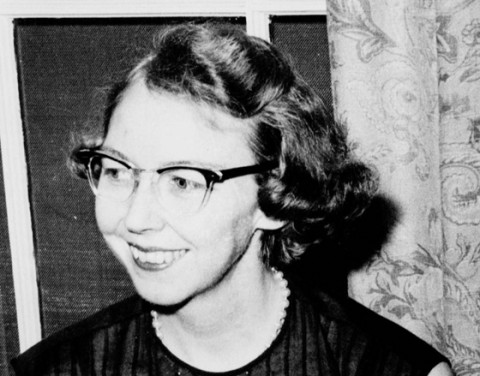Grace hurts: Conversion in Flannery O’Connor’s fiction

Idiosyncrasy is the hallmark of the great artist. The individual flourishes that denote a grand imagination almost always appear as interruptions in a bland marketplace, diverging from the prevailing philosophical, aesthetic or narrative standards of the day. In Tolstoy, an ambivalence toward straightforward plot reveals itself as he continuously derails his stories to show us characters dancing, threshing, simply stopping in the woods—almost as if he can’t stop the overflow of abundant life into his prose. In Faulkner, the reader finds the inspired devolution of prose into poetry, that more primitive expression of our fundamental emotions. Lawrence was given to tautological, almost liturgical repetitions quite unique to him, Chekhov to an abiding compassion that seemed to love character and experience more than form—in particular, tidily conventional denouement—and David Foster Wallace to a hyperkinetic prose that refused the placidity and quietness of the more realist novel.
Flannery O’Connor’s artistic signature involved a severity of image, dark-as-night humor, and a relentless preoccupation with sacramental violence. At the time, her output—two slim novels and some of the 20th century’s best short stories—was received as grim, brutal and decidedly unfeminine. Accordingly, her readership was small. But if hers was not the most digestible art, perhaps, like much great art before and after, it was never meant to go down easy. Great art sticks like a bone in the gullet.
When contemporary writers tire of the popular demand for books that “tell us how we live today,” as if the writer were mere handmaiden to the ephemera of the age, they can take comfort in knowing that their plight is not a new one. In the decade before her death in 1964 from systemic lupus erythematosus, O’Connor was busy defending and defining her work in essays and public talks, and her thoughts often returned to this critical demand for whatever was deemed most culturally relevant, that is, politically pertinent, topical or immediately useful to readers interested in understanding their identity only in the most constricted and myopic terms—usually American. The contraband often smuggled into the demand for expressly American novels was the expectation that these literary artifacts would reproduce the joy, ease and optimism that necessarily accompanied life in a wealthy nation. In other words: the reification of Western middle-class values. But O’Connor was having none of it. She was, after all, a Christian writer.




